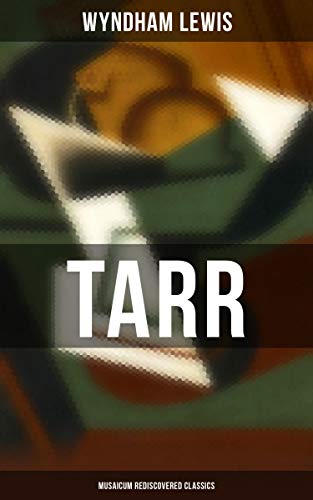Tarr (Musaicum Rediscovered Classics)
Wyndham Lewis
BOOK REVIEW

Tarr by Wyndham Lewis is not just a novel; it's an audacious plunge into the tumultuous waters of early 20th-century modernism, a bold tapestry woven with threads of existentialism and insanity. This literary masterpiece electrifies the mind, shaking readers to their core. Lewis, a maestro of chaos, invites you into a world where the rules are upended, and the very fabric of reality is questioned. If you've ever wondered what happens when art intersects with madness, then buckle up; this is a wild ride where each turn leaves you gasping for air.
At the heart of Tarr lies the unapologetically complex character of the protagonist, a young man named Tarr, who navigates through a chaotic existence filled with profound philosophical questions. Portrayed as a reflecting pool of disillusionment, Tarr embodies the existential angst that permeated Europe on the brink of World War I. His struggles resonate deeply, forcing readers to confront their own internal conflicts. Lewis deftly dissects the human condition, presenting Tarr's tumultuous journey as an allegory for the larger struggles of society itself.
What truly sets Tarr apart is its electric prose, a cacophony of ideas that is as exhilarating as it is challenging. Lewis's unique narrative style transcends traditional storytelling, fusing the chaotic energy of contemporary life with a keen observational prowess. The narrative is rife with bursts of sharp wit and philosophical musings that compel readers to reflect on the absurdities of existence. You could almost hear the heartbeat of the modernist movement within its pages, echoing the revolutionary sentiments that inspired a generation of artists and thinkers.
And yet, not everyone has heralded this daring work with open arms. Critics argue that the very brilliance of Lewis's chaotic style can be off-putting, leaving some readers feeling lost in the whirlwind of its ambitions. "It's a masterclass of modernism," some rave, while others dismiss it as a pretentious exercise in confusion. How do you reconcile such conflicting sentiments? The answer lies in the very essence of what makes Tarr an essential read - its ability to provoke thought, spark debate, and ignite fierce discussions.
The context in which Tarr was birthed is also crucial to understanding its impact. Written during a time when Europe was grappling with the existential dread brought on by the looming threat of war, Lewis encapsulated the anxieties of an entire epoch. This was a time when traditional values were being questioned, and the very essence of civilization felt precarious. The novelty of modernism bloomed in stark contrast, and Lewis was at the forefront, daring to explore the shadows lurking behind the canvas of life.
Imagine the creative minds it would later influence - artists like T.S. Eliot and Ezra Pound, who would draw from this wellspring of modernist rebellion. The ripples of Tarr can be felt through literature, visual art, and even political discourse, shouting defiantly against conformity. It stands as a testament to the power of art in articulating the inexpressible, stirring a revolution within anyone brave enough to embark on its pages.
In the end, Tarr is not mere entertainment; it's a visceral experience that demands engagement and introspection. It forces you to confront your beliefs and question the status quo. So, whether you find yourself heaving in laughter, bursting with indignation, or swept away in introspection, one thing is certain: once you step into Lewis's world, there's no turning back. Don't just read it; live it. The echoes of Tarr will linger long after the last page is turned, whispering reminders of the chaotic beauty that is life itself. 🌌
📖 Tarr (Musaicum Rediscovered Classics)
✍ by Wyndham Lewis
🧾 330 pages
2020
#tarr #musaicum #rediscovered #classics #wyndham #lewis #WyndhamLewis